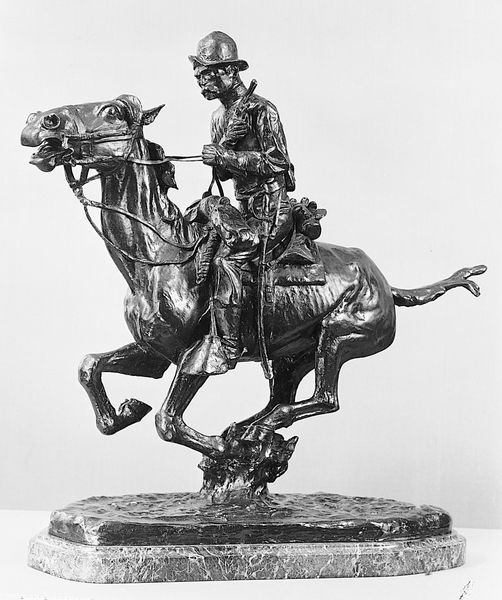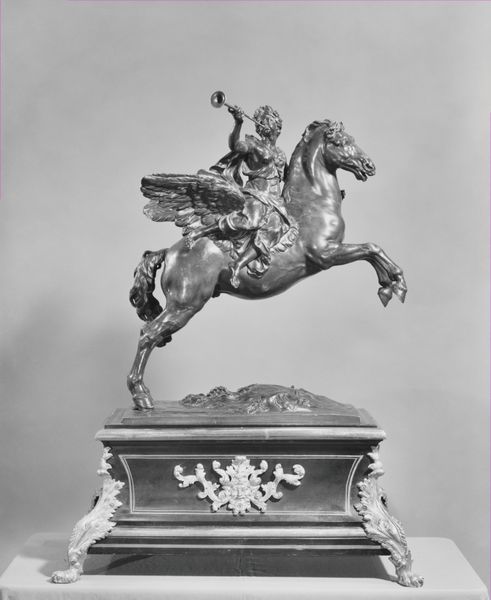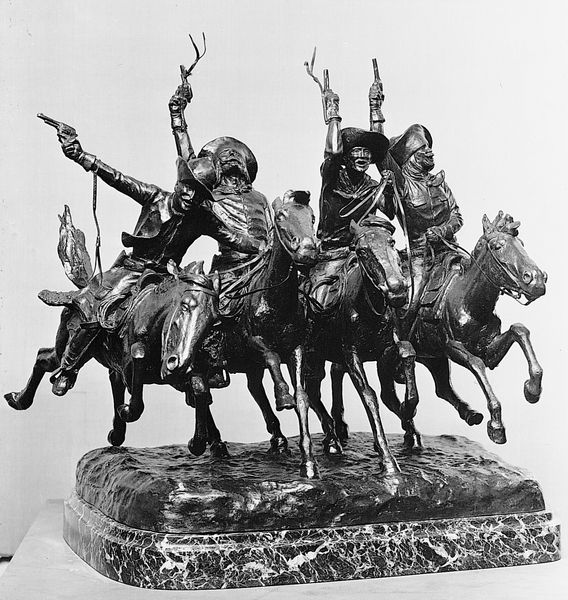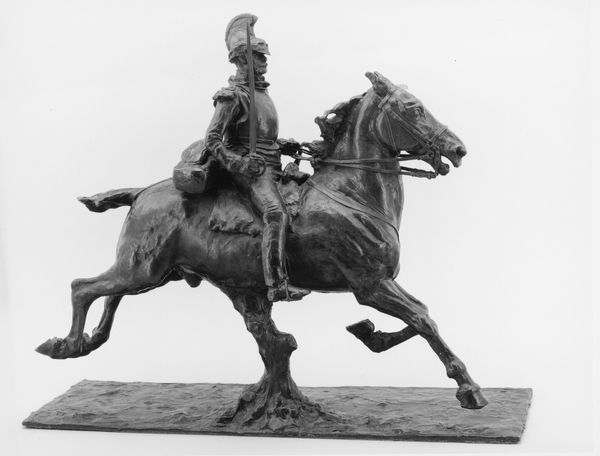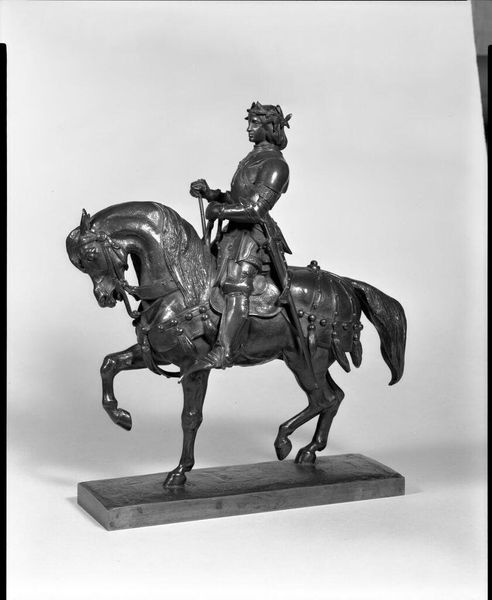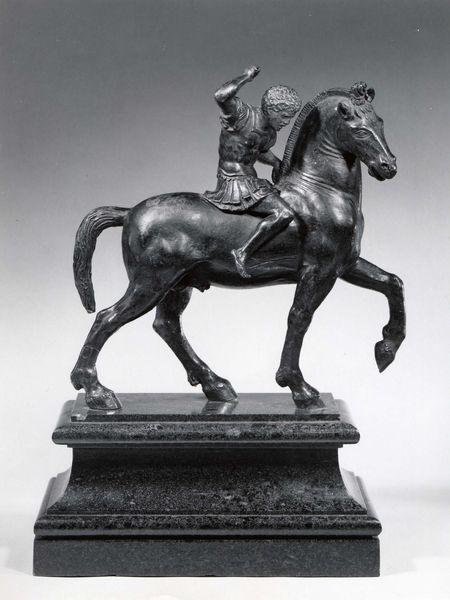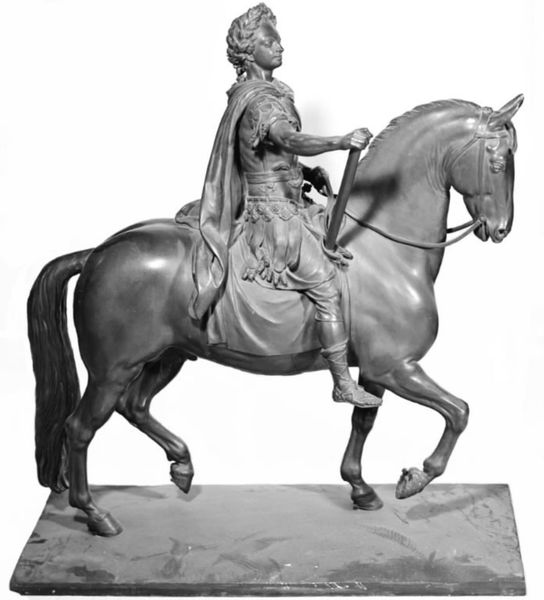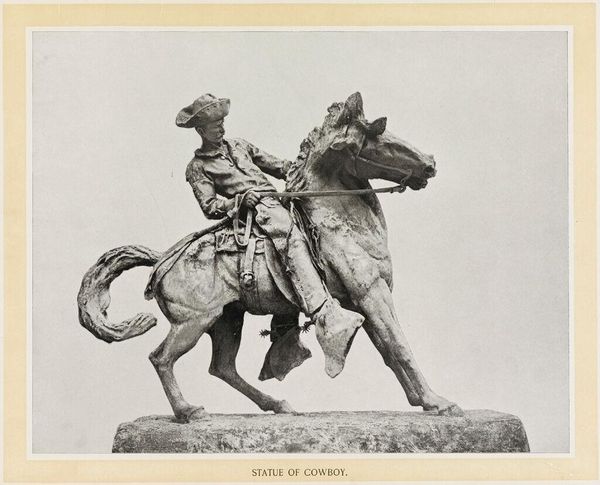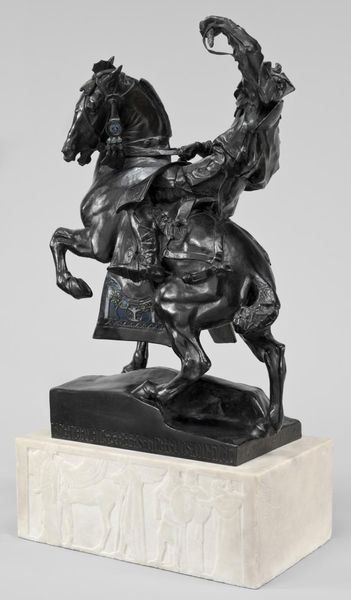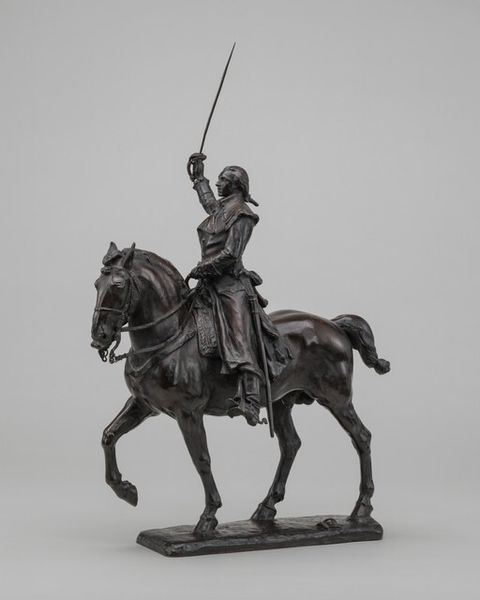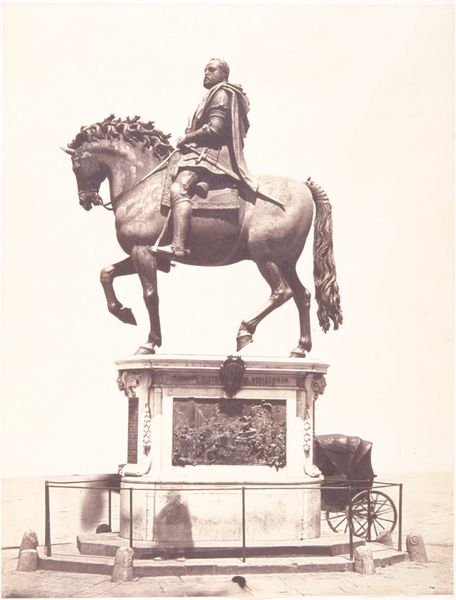
bronze, sculpture
#
sculpture
#
bronze
#
figuration
#
sculpture
Dimensions: 22 3/4 x 23 1/4 x 9 5/8 in. (57.8 x 59.1 x 24.4 cm)
Copyright: Public Domain
Editor: We're looking at "The Scalp," a bronze sculpture by Frederic Remington, likely completed sometime between 1898 and 1938. The sculpture has a lot of motion, with the horse rearing up. What's your interpretation of it? Curator: What strikes me immediately is the title itself, "The Scalp," and the gesture of the rider brandishing what we presume is a weapon, perhaps for scalping. This piece offers a powerful, though deeply problematic, glimpse into the narratives of the American West that often romanticize conquest. How do you think Remington, as a white American artist, participated in shaping these narratives? Editor: I hadn't thought about it that way, but the title does feel loaded now. It’s easy to see the heroic image of the Indigenous rider, but gloss over the violent implications. Is it fair to critique Remington using today's standards? Curator: It's crucial. Art doesn’t exist in a vacuum. Understanding the historical context, especially the violence inflicted upon Indigenous peoples during westward expansion, forces us to confront the problematic gaze through which these stories were, and continue to be, told. Look at how the horse and rider are posed, what feelings are you experiencing? Do you feel a romantic idea about this encounter? Editor: I guess there is a romanticism to it, the power of the rider is emphasised. Now that you mention it, maybe it perpetuates that narrative and even makes the subject almost mythological. What should museums do with art like this? Curator: That’s the key question, isn't it? Simply removing the artwork doesn’t erase history. The path is to contextualize the piece with thoughtfully constructed counter-narratives that center Indigenous voices and experiences. These approaches can provide a more nuanced understanding, highlighting the historical power imbalances and challenging romanticized, often inaccurate, depictions. Editor: I see what you mean. We have to show these images to create discussion. This was very thought-provoking! Thank you! Curator: It’s crucial for us to see the harm perpetuated and have constructive dialogue with all communities to heal and reconcile. Thanks for helping me stay accountable as well!
Comments
No comments
Be the first to comment and join the conversation on the ultimate creative platform.
